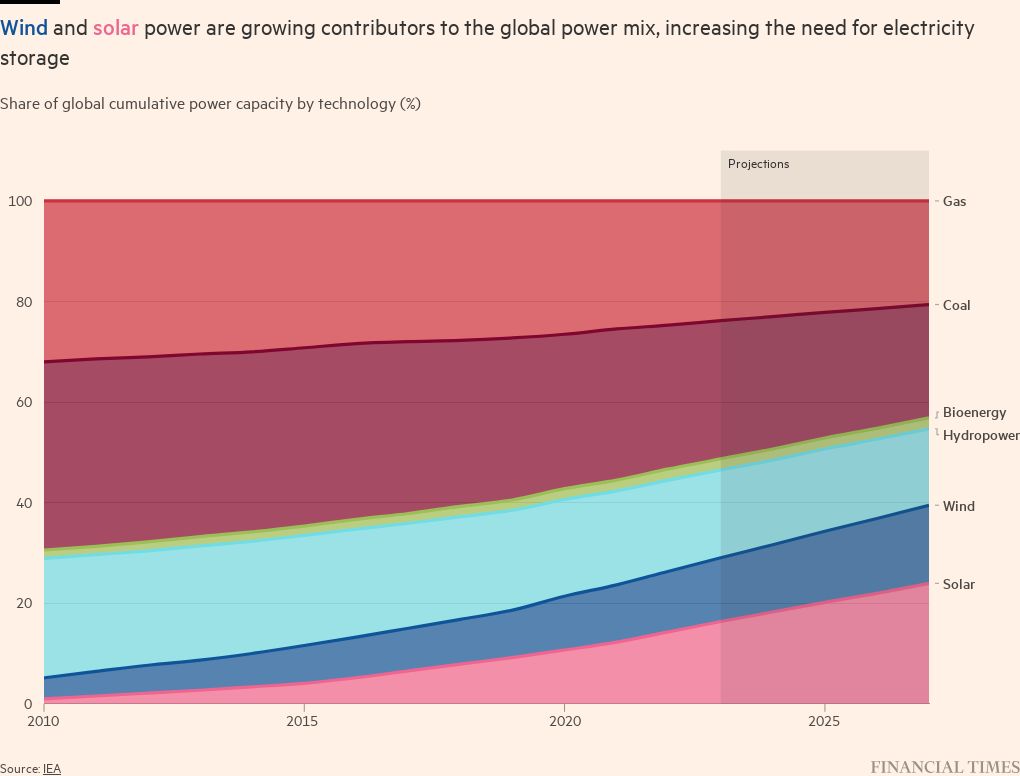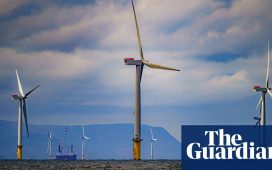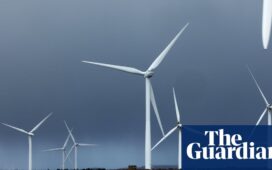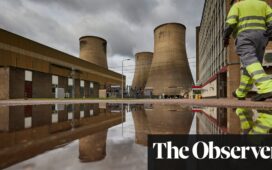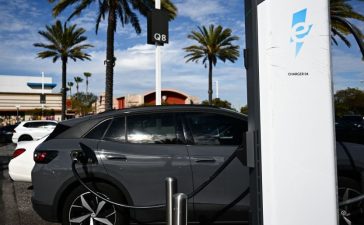The 230-tonne metal cylinder emits a roaring hum as it spins at 600 revolutions per minute, driving a pump buried underground that brings new meaning to the idea of pushing water up a hill.
Far from the analogy of an impossible task, it is the core of a Portuguese power plant aiming to show that pumping water 7km up a mountain can be an essential — and commercially viable — part of an energy system led by renewable power.
Built by Spanish company Iberdrola at a cost of €1.5bn, the facility in a rocky river valley in northern Portugal is known as a pumped storage plant.
But insiders have another name for the reservoir at the top of the mountain. It is a “water battery” — rudimentary in concept, intricately engineered and a highly effective way of storing energy.
The Tâmega plant takes excess electricity from the grid, mostly generated by wind and solar power, and uses it to pump water from a lower reservoir to an upper one.
Surveying its placid blue surface, Rafael Chacón Llorente, Iberdrola’s project director at the complex, said: “When the water level is at 885 metres above sea level, the battery is fully charged.”
Then in peak hours, when the grid requires more power, the system is reversed on demand. A gate opens and gravity brings millions of litres of water thundering back down a tunnel every minute. The pump becomes a turbine and it spins the metal cylinder the other way, generating electricity at zero cost.
The power production is significant. The turbine has a capacity of 880 megawatts, roughly a quarter of Hinkley Point C, which is set to become the UK’s biggest nuclear plant.
Because Tâmega can generate for up to 24 hours, the total amount of energy stored in the upper reservoir is 21GWh, enough to charge 400,000 electric vehicle batteries, or sustain 2.4mn homes in Portugal for a full day.
Such storage is a vital complement to the growing global role of wind and solar power in producing electricity free of carbon emissions. However, the challenge for businesses is finding the right conditions to make new pumped hydro projects economically attractive.
The problem pumped hydro solves is the variability of wind and solar power. On one hand, the sun does not always shine and the wind does not always blow.
On the other, when the sun is blazing and the wind is howling, solar panels and spinning turbines produce far more electricity than can be consumed at any one time. Because power grids cannot handle any excess, the electricity has to be stored somewhere or it will be lost.
That need for storage will only grow as renewable power expands. Portugal had 61 per cent of its electricity from renewable sources in 2023 and is aiming for 85 per cent by 2030. By the same deadline, Spain wants to hit 81 per cent.
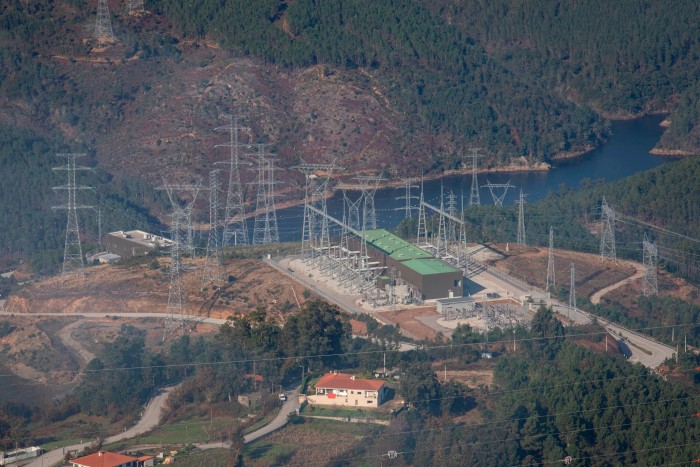
At a plant such as Tâmega, surplus electricity can be used to “charge” the reservoir, often during the daytime. Then in the evening, when lights and appliances are on in homes, the pump is switched to turbine mode and generates power.
Diego Díaz Pilas, Iberdrola’s global head of ventures and technology, said chemical batteries also had a role to play in grid storage: Iberdrola has plans to expand the global capacity of its battery projects to 3GWh. But their scale is smaller than pumped hydro both in terms of brute power and how long they can produce electricity at full capacity (two to four hours for lithium-ion batteries, versus roughly a whole day at Tâmega).
“When you have a lot of solar, it pairs very well with batteries because solar generates in daylight hours, and batteries can be discharged when the sun is not shining,” said Díaz Pilas. “But when you have also a lot of wind — and 50 per cent of electricity will be coming from wind in Europe around 2030 — you really need to store vast amounts of energy.”
Pumped storage has been around for a century. Many facilities, such as Drax’s Cruachan plant in Scotland, were built in the 1960s to store surplus electricity from nuclear plants. Today pumped hydro accounts for more than 90 per cent of global electricity storage, a lot of it in the US, according to the International Energy Agency.
But more is needed. In Spain and Portugal, Iberdrola has 100GWh of existing pumped storage and another 170GWh under construction or in the pipeline. China has big plans to build even more.
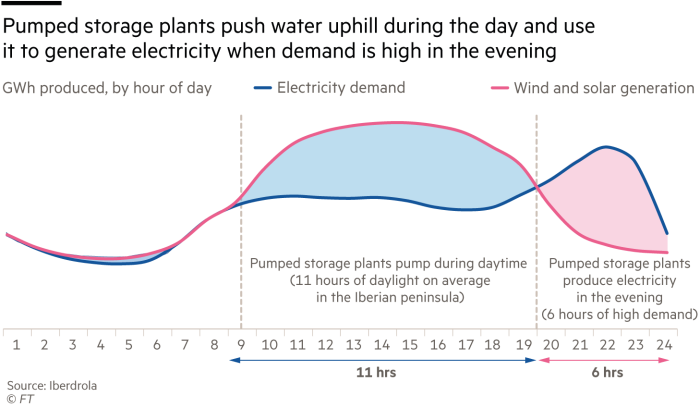
Once constructed, the plants have long lifespans and become arbitrage plays on the electricity price. At Tâmega, Iberdrola buys power from the grid to pump when it is cheap, then sells power back when it is expensive. In Portugal’s power system on Monday, the average off-peak price of €54 per MWh compared with an on-peak price of nearly €78. “That’s how you make a margin,” said Díaz Pilas.
Another champion of pumped storage is Malcolm Turnbull, Australia’s former prime minister who when in office orchestrated the state-owned Snowy 2.0 project, which has become a byword for cost blowouts and is due to be completed in 2028 with an $8bn (A$12bn) price tag.
“Anyone that’s got a pumped hydro scheme is so happy . . . I can tell you they’re all making money,” he said in a new role as head of the International Hydropower Association. “The problem is the cost of building new ones.”
The capital expenditure required is huge and construction can take six years or more. Iberdrola got a €650mn loan from the European Investment Bank for Tâmega. Developers must also negotiate complex permitting procedures and stiff opposition from residents and environmentalists to plans to demolish homes and flood natural habitats.
That is why Iberdrola said it needed more incentives than just the price spread. At Tâmega, where the company has a licence from the Portuguese government to operate for 70 years, it also receives a steady stream of “capacity market” payments, which are paid by the grid operator in return for a guaranteed supply and other services to keep the network stable.
In the UK, energy companies look on in envy. Scotland has ample potential to use pumped hydro to store electricity generated by wind. Drax’s Cruachan plant is profitable, but mainly thanks to supply contracts signed when energy prices were high.
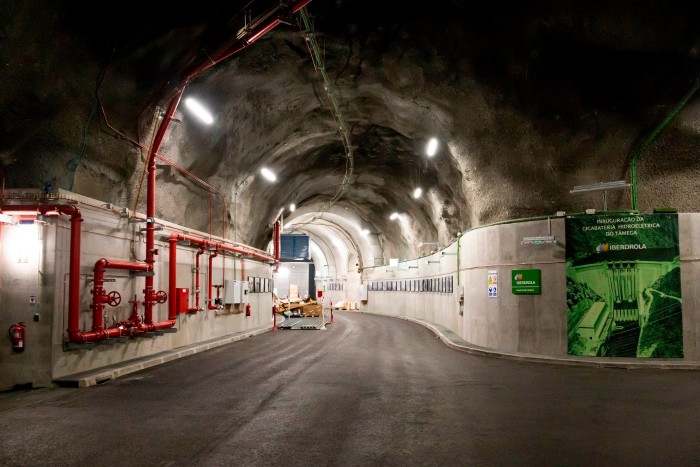
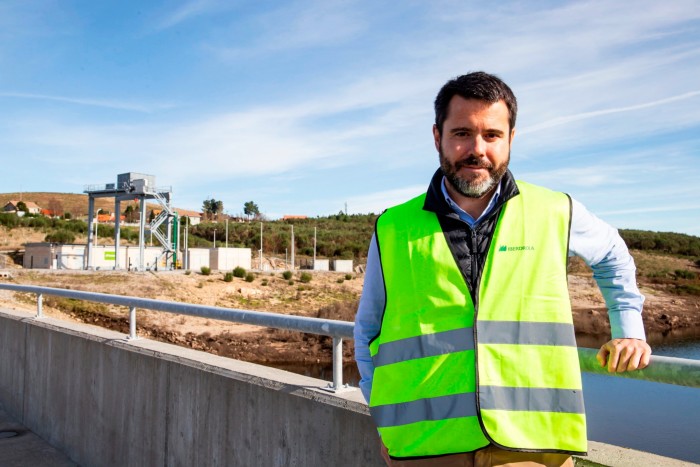
Ian Kinnaird, Scottish assets director at Drax, said the UK regulatory set-up was not good enough for new projects because it was not adapted to the long lead times for pumped storage. Reforms were needed, he added, to “de-risk” the financing for investors.
At Iberdrola, Díaz Pilas said: “We don’t need anything fancy . . . We just need faster permitting and stability in the regulatory framework. It’s actually funny that we are here talking about a technology that is nearly 100 years old, but it is so important for the future.”
Climate Capital

Where climate change meets business, markets and politics. Explore the FT’s coverage here.
Are you curious about the FT’s environmental sustainability commitments? Find out more about our science-based targets here

